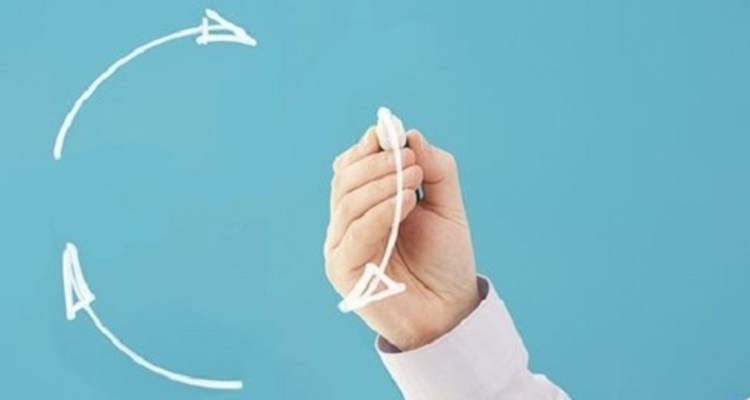At the moment, we yearly use up around 1.5 to 2 times more of natural resources than the Earth is able to regenerate. Our consumption model is linear – we take natural resources, we process them, we make a product. When we have finished using it, we dispose of it. It is also referred to as the ˈtake, make, disposeˈ system.
This approach leads to an increasing amount of waste that is mostly unrecyclable or even dangerous and potentially health threatening. The result is an unsustainable system.
Circular economy aims to change this linear economic model into a circular model, one that is sustainable. It approaches natural resources responsibly and intends to make products, that will prevent the last part of the linear model, the disposal. Instead, it focuses on innovative possibilities for its reuse or its repurposing into a reusable resource.
I hear you thinking, I know this, it is recycling…
Circular economy is more than recycling
The magic of circular economy lies not only in material recycling, but above all in the innovative approach to the whole production process. Product design is the primary changemaker here and the products are designed in such a manner that they satisfy the demands of circular economy. They have to be long-lasting, easily repairable, designed for disassembly and repurposing for further use. The goal is to minimize the energy required for the product’s lifecycle. In fact, we put a stop to decades of increasing production complexity and product composition and seek ways, how to simplify them again.
Innovative businesses set the trends
Innovative businesses lead the trends and develop new production processes that correspond with international sustainability requirements. Not only do they make natural resources use more effective, they also build a base of trusting customers that follow and support their vision. The biggest changemakers at the moment are big corporations piloting projects based on renting, product efficiency, repair and reuse, and long lasting products. Their effort has the biggest potential to start the fastest change of the economic model, due to their large supply chain reach. Suppliers of these corporations have to adjust to their new requirements.
New skills are needed…
Transfer to circular economics is not simple and demands systemic changes that are built upon new skills not only in the field of STEM (Science, Technology, Engineering and Mathematics) but also in more creative fields such as marketing or design. At higher levels, there will be need especially for systematic thinking and modelling skills in order to design the right production processes. It is essential to change the production process design right in its beginning. At a more practical level cooperation with educational institutions such as universities and high schools will be needed.
… and a consumption model change
New production approach will affect our consumption approach. Already, there are new ways of how to use products as well as services. New renting and sharing systems have started to develop. The consumption model is being transformed from the need to “own” to the need of “to have access to” or “to be able to use”. Consumers do not have to worry about maintenance or a subsequent disposal of the product. Furthermore, especially the young generation has come to realize the system of renting and sharing makes better sense economically as well as ecologically. Companies such as Philips, Kingfisher Group or Mud Jeans already pilot the so-called product-as-service projects, that change the perception of a customer to a user more than just a consumer. Multifunctional use of sustainable buildings, car rental, flexible forms of work and effective infrastructure can be the result of the new system. This way businesses remain the product owners and are responsible for its maintenance, repairs and repurposing.
Consumption decrease – negative effect on GDP?
It is supposed there will be an overall increase in consumption of services rather than products. In a developed circular economy system, a model set up in this way could lead to an overall decrease in consumption. The question is, what would people do with the money they save. Some studies claim people are more likely to save such money, others argue they would spend them on other services. Lower consumption could cause a decrease in GDP. It is important to note, however, that a greater access to products caused by the effects of circular economy, would also lead to increased social and environmental benefit. Measuring the economic growth solely in terms of GDP would then be unsatisfactory for the purposes of circular economy.
Circular economy as a sustainability model 2.0
The basic business sustainability performance was and still is measured by the result of negative impacts on their surroundings. Circular economy allows for moving on from measuring the negative impacts to maximizing the positive impacts. Businesses will tend to focus more on how to reinforce their positive impacts instead of solely preventing the negative ones (although they still remain an important corporate responsibility factor). A new, advanced model of sustainable business performance is created, one that gives the true meaning to the strategy of corporate responsibility.

